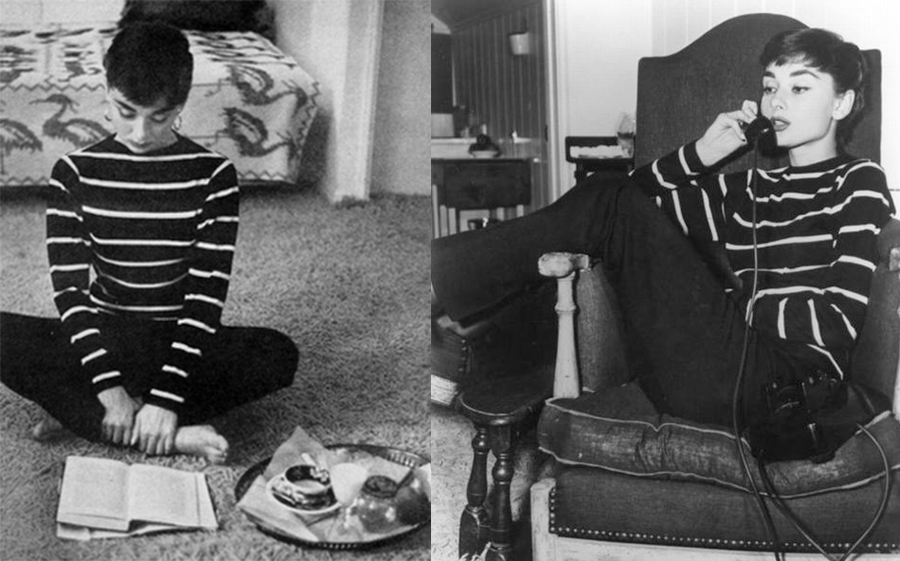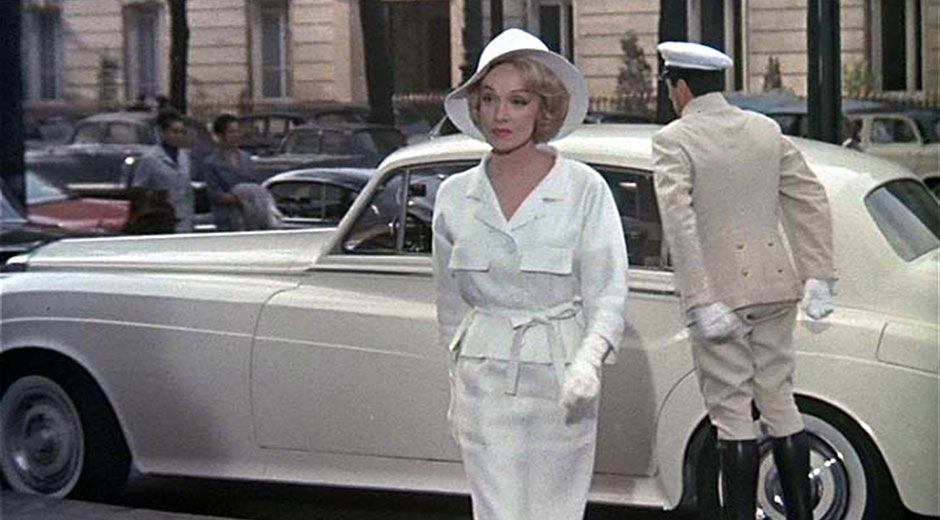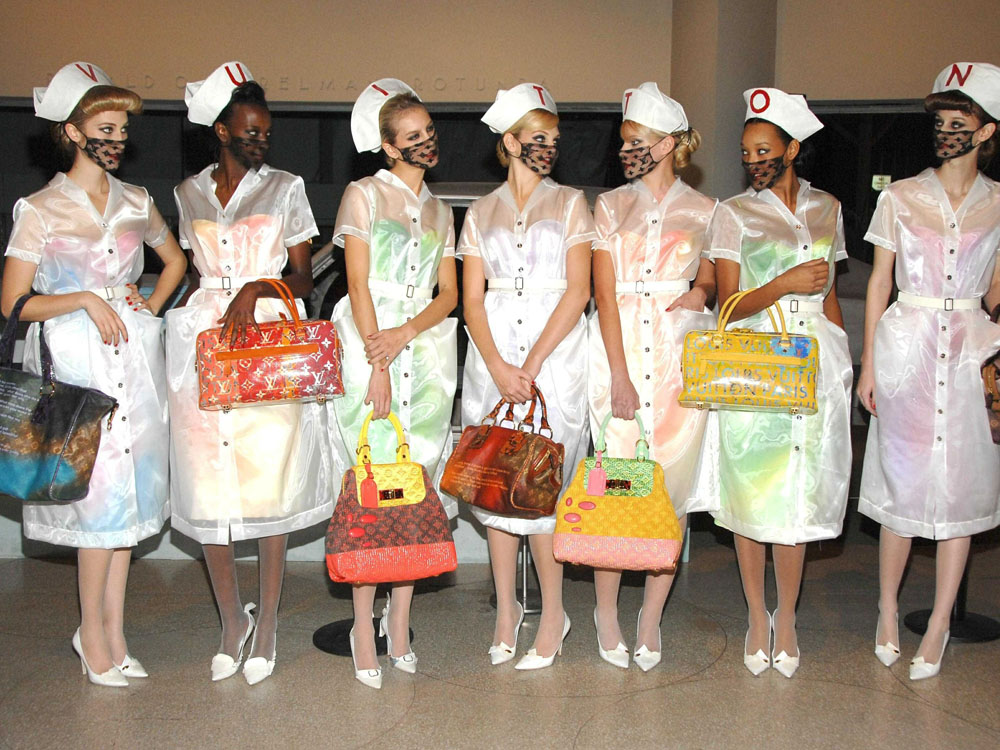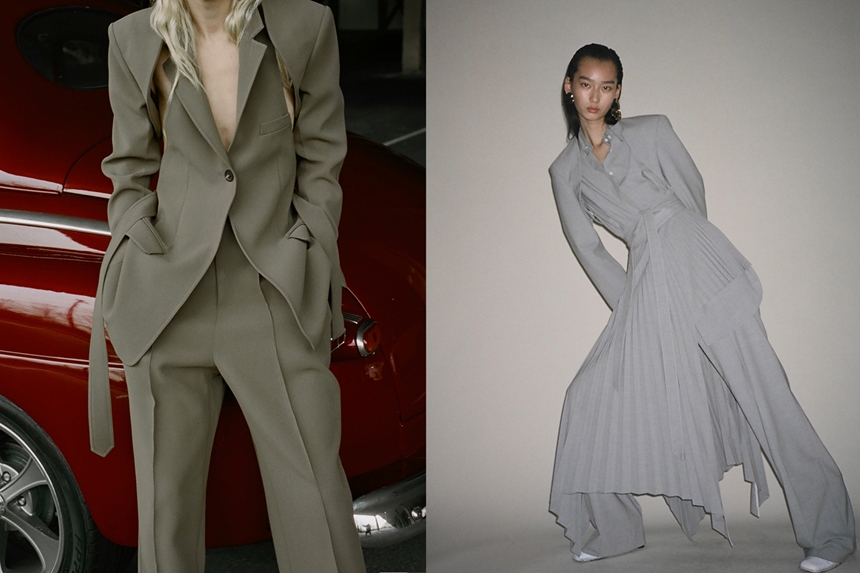Hi I’m Paul Roberts welcome to my PODCAST Channel “THE FUTURE” where I cover BREAKING TRENDS FROM AROUND THE WORLD.

In our ever accelerating times, keeping ahead of the latest breaking news and trends from the world’s of fashion, music, film, art, tech, activism, is a time consuming daily challenge ? Sure the information is all out there, but it is a time consuming ordeal to scan all the necessary sources. As Darwin said survival depends on how quickly you can adapt.
The future belongs to those who prepare today.
In today’s PODCAST FIB’s Trend Report #97 PODCAST – THE STORY OF PARIS FASHION written by Suze Montgomery, I’m taking a slightly different tack to my usual Trend Forecasts about the future, and instead I’m going to take a look back into history to make sense of where we are now and where we are going with Paris Fashion. And this happens to be a timely opportunity with the 2020 Fall / Winter NYFW taking place in Paris Feb 24th to March 4th.
The Story of Paris Fashion
Paris is a world leader in style. In the 17th century, the French fashion industry rose to the pinnacle of the international textile trade, cementing itself as a global power in fashion for hundreds of years. During this time it has attracted the world’s foremost designers and imbued its citizens with an unmatched and innate sense of style.
To this day, France an enduring reputation as a style leader, with fashion holding a significant place within French cultural life. Luxury labels Chanel, Dior, Yves Saint Laurent, Louis Vuitton, Givenchy and Jean Paul Gaultier have set an impeccably high standard for couture.
The city of Paris is at the centre of the French fashion industry, remaining one of the big four Fashion Week events each season. Parisian couture has a reputation like no other, feeding a public hungry for the latest in stylistic innovation and superior quality. The historic Avenue des Champs-Élysées is a must-see on any visit to Paris and is a fashion-lovers paradise.
So how did Paris become the international beacon of fashion that it is today?
The city’s legacy begins with the “Sun King”, King Louis XIV, whose love of the lavish and luxurious is immediately apparent in the gilded aesthetics of the Palace of Versailles. King Louis secured the textile industry under the control of his royal court, creating a national dependence on luxury goods. Even centuries after his reign, fabrics and garments of the greatest quality called France their home.
Haute couture or “high fashion” is a distinctly French invention: a style hand-crafted from extravagantly expensive and high-quality fabrics. Extreme attention to detail and individually specific tailoring set haute couture apart from the rest and changed the game when it came to the textile industry. Designers and tailors had to base their businesses in the flourishing hub of France, or risk being left behind.
Many famous French fashion labels have their roots in the luxury goods trade. Hermès began as a supplier of coach harnesses and equestrian accoutrements in 1837. The Hermès clientele consisted of only the uppermost circles of high society, but the brand was also able to adapt to changes in transportation, developing travel luggage with a reputation for quality. Still today, Hermès Kelly and Birkin bags are symbols of status, in part due to their pedigree as a Parisian brand.

In the 1900s, fashion transformed from this more practical trade into its modern form, even something approaching visual art. In the early years of the century, Parisian designer Paul Poiret emerged, in the view of many, as fashion’s first genius. The son of a respected cloth merchant, Poiret began working for prominent couturier Jacques Doucet as a teenager. In 1903, upon opening his own fashion house in Paris, Poiret introduced the world to his waiflike, high-waisted womenswear silhouette. The dresses presented the public with narrow lines and geometric shapes, rendering the once-venerated hourglass suddenly old-fashioned. For the first time, corsets and layers upon layers of clothing were out of fashion. This freedom of movement would characterise French fashion for years to come.
One of the most respected houses of fashion in the world is Chanel. The household name and shorthand for sophistication began in 1913, when Gabrielle “Coco” Chanel opened her first boutique.
In 1921, the label’s first fragrance, Chanel No. 5 was released to immediate acclaim. The best-selling fragrance in the world, this was the first time a fashion house and created a perfume. In 1954, Marilyn Monroe reignited popularity of the scent when she was asked “What do you wear to bed?” and answered, “Just a few drops of No5”.
The brand is admired the world over for its well-fitted suits which take inspiration from menswear, focusing on tailoring and moveability. Poiret’s freedom of movement informed Chanel’s work, and she ran with it, infusing her designs with the liberation of the flapper age. Chanel created the first Little Black Dress in 1926, a style that would take the fashion world by storm and become an enduring fashion staple. Vogue Magazine compared her LBD to the popularity of the Ford motorcar.
In the 1950s, the ‘breton’ stripe gained fashion prominence. Originally a uniform for the French navy, the now stereotypical French style became popular for its casual appeal, appearing in Chanel’s 1917 nautical collection.
The stripes were worn by Audrey Hepburn, James Dean and Brigitte Bardot, and was also shown in the French new wave cinema of Jean-Luc Godard. It has become an easy visual signifier of French culture, another way that Coco Chanel has altered the course of fashion history.

But there’s a darker side to the Chanel story that is often overlooked. In recent years, the world has become aware of her covert secret life as a Nazi agent. Chanel became a spy for the Germans and also attempted to utilise Nazi anti-Jewish laws to her advantage, taking part of her business back from Jewish-owned companies. She never saw any ramifications for her allegiance to the Nazis during her lifetime.
The French fashion industry as a whole was significantly affected by the Second World War and the German occupation of Paris. With many stores forced to close their doors during this time, the world’s attention shifted towards American designers.
Christian Dior spearheaded the post-war aesthetic. He began his eminent brand in 1947, with the objective of redefining the way that women dressed. After the rationing and bleakness of the war, the House of Dior became known for couture, and following in the footsteps of Chanel, perfume and beauty products. Unlike Chanel, however, Dior returned traditional feminine silhouettes to fashion, cinching women back into corsets and hourglass shapes.
Dior trained under designers Robert Piguet and Lucien Lelong. Dubbed the “New Look”, his first collection carved a sophisticated niche in Parisian fashion. The world was prepared to indulge in luxury once more, and Dior provided fashion devotees with the extravagance that they craved. Structured silhouettes and fabrics of the highest quality optimised Dior’s style. The label returned Paris to its place at the forefront of fashion.
Dior created every outfit for Marlene Dietrich in the Hitchcock film Stage Fright 1950.The looks exemplify the Dior philosophy of treating couture as a kind of architecture. Precision tailoring and innovative shapes transform the wearer. Dior’s outline dominated the 1950s.
Dior said, “a dress is a piece of ephemeral architecture, designed to enhance the proportions of the female body”.

When Dior died of a heart attack in 1957, his senior assistant took the reigns of the company; a then little-known 21-year-old designer Yves Saint Laurent.
After working as Dior’s creative director for four years and taking the brand to dizzying new heights, Saint Laurent launched his eponymous label in 1961. In a decade of social revolution and upheaval, gender roles were once again at the forefront of fashion. Motivated by the power of menswear, Saint Laurent took men’s structures and tailoring to womenswear, changing to course of women’s fashion forever. The label took clothing to new, more gender fluid places, crossing between traditional styles of men’s and women’s fashion. Saint Laurent established women’s power dressing at a time when women were still expected to be stereotypically feminine.
Saint Laurent’s Le Smoking look, a black tuxedo featuring a side stripe of satin and worn with a ruffled white shirt, revolutionised womenswear and caused much controversy on its release in 1966. No other haute couture label had ever featured trousers as an eveningwear option for women, the Saint Laurent woman was distinctly modern, flouting the outdated rules of a patriarchal society.
The YSL tuxedo has a timeless sophistication that endures to this day.
Saint Laurent said:
“For a woman, Le Smoking is an indispensable garment with which she finds herself continually in fashion, because it is about style, not fashion. Fashions come and go, but style is forever.”
The twentieth century held much promise for Parisian fashion. The USA, once looked down upon by the French for its lack of history and sophistication, was redefining itself as a contemporary style destination. In the 1960s, London was the swinging capital of irreverent, revolutionary fashions. Mini skirts and bare feet epitomised the “beatnik” look of the era. France’s answer came from André Courrèges, who introduced mod fashion to Paris runways with short skirts and knee-high white patent leather boots. Elsewhere in Europe, Italy was forging its own distinct sense of style, deliberately distancing itself from the French capital and creating its own rich cultural identity in fashion.
Italy was becoming a powerful adversary for France, in part due to country’s long history of leather goods merchants and quality tailoring. But France always had a few aces up its sleeves.
Louis Vuitton was founded in 1854, and is one of the world’s most long-standing fashion houses. The brand began as a trunk company, with the designer pioneering the signature flat-topped trunks whose design would be copied and imitated thereafter. Box-making was a highly respected craft at the time. From humble beginnings as a small workshop, one of the most iconic brands on the planet was born. In 1913, the Louis Vuitton building opened on the Champs-Elysees, the world’s largest travel-goods store at the time.
The signature LV monogram canvas, which consists of quatrefoils and flowers inspired by Japanese designs, was introduced in 1896 as a way to fight counterfeits. Today, the Louis Vuitton logo and signature patterns, including the classic light and dark brown checkerboard, have transcended mere aesthetics to become a visual signifier of success and wealth. Anyone who’s anyone wants to carry a Louis Vuitton bag, as a way to communicate their status.
While the brand has survived through the ages, Marc Jacobs had a large part in Vuitton’s rebirth in the 21st century. Jacob’s time at the helm began Vuitton’s genuine foray into clothing, with men’s and women’s lines that proved to encapsulate that most difficult of balancing acts: fashion that is classic while fresh at the same time.

Many of the couture houses in Paris have had to face the changing fashion landscape and adapt accordingly. Specifically, this has meant following in the direction of the masters of Italian fashion who, after separating themselves from the French scene, embedded themselves into the cultural consciousness with innovative, ready-to-wear designs. The need to compete with the burgeoning American and Italian markets led to French luxury brands creating ready-to-wear collections alongside their haute-couture designs. The rise of the middle class in the 20th century meant that brands could no longer remain profitable by only catering to the filthy rich.
Hubert de Givenchy began his career as an apprentice to the Jacques Fath couture house. He worked as an assistant designer to Lucien Lelong, Robert Piguet and Italian trailblazer Elsa Shiaparelli. Givenchy opened his own house in 1951 and was quickly lauded for his talent for innovation and his system of designing each garment as one part of a whole. Even evening gowns were interchangeable elements within wider collections of items, which could be swapped out to generate new outfits.
Givenchy went on to create fragrances for his business, Société des Parfums Givenchy in 1954. that same year saw the designer begin his long-term fashion relationship with Hollywood actress Audrey Hepburn, who would become his most famous model. Givenchy’s creations appeared in several of her films, including Sabrina, Funny Face, Breakfast at Tiffany’s and My Fair Lady. These films helped propel the brand into becoming the household name that it is today. Breakfast at Tiffany’s recreated the Chanel little black dress, the addition of pearls and a pair of sunglasses making a new iconic look.
Audrey Hepburn’s veneration of Givenchy spurred other Hollywood stars towards his designs, with Grace Kelly and Elizabeth Taylor becoming adherents to the brand.
Hepburn said of Givenchy, “His are the only clothes in which I am myself. He is far more than a couturier, he is a creator of personality”.
Givenchy was also Jacqueline Kennedy’s favourite designer, who famously wore a Chanel suit on the day her husband was assassinated. The first lady wore a Givenchy gown on the day of President Kennedy’s funeral.

Typically though, Givenchy’s style was known for its youthfulness and vibrant, cheerful colours. But the brand’s evening wear was always the height of simple chic.
In the 1970s ready-to-wear or as the French call it, prêt-à-porter, replaced haute couture at the top of the fashion pyramid for the first time.
As the decades wore on, designers had to work harder to carve out a niche for their products in an oversaturated market. Christian Louboutin emerged as the shoe designer of the era. The signature red soles of Louboutin heels have become, like Hermès, a symbol of status and sophistication.
Jean-Paul Gaultier is the French designer who most shaped the Paris fashion scene in the 1980s and 90s. instantly recognisable by the famous Gaultier silhouette of broad shoulders and cinched hips. The brand’s fashion shows made a name for the designer with their energetic and stimulating provocation.
Gaultier discovered fashion at a young age and taught himself as much as he could from fashion magazines and television. After working as an apprentice for Pierre Cardin, Jacques Esterel and other big names in the industry, Gaultier presented his first women’s fashion show in 1976. By 1982, he had established a business that would experience continued success over the decades.
Gaultier insists that fashion is never art but does view his work as the construction of beauty, “I would like to say to people, open your eyes and find beauty where you normally don’t expect it.”
Jean-Paul Gaultier has managed to maintain a stylistic consistency throughout his oeuvre, with the basic elements of a suit- jackets and trousers- forming a link between his men’s and women’s collections. Femininity is infused into womenswear with the addition of signature stockings, corsets and garters. In this way, lingerie became an item of outwear, most famously worn by Madonna at the height of her success. On her Blonde Ambition tour, Madonna donned the Gaultier cone-bra corset, an item that has transcended that moment in time to become part of fashion history.
In the decades since, luxury brands like Mugler, Lanvin, Chloe, Rochas, Vivier and Cardin have risen to the top of the ladder in the Paris fashion scene. Women’s and men’s fashion have become increasingly similar, with gender constraints gradually falling away. Menswear continues to inspire women’s fashion, the seeds for this style having been sown hundreds of years in the past. Paris continues to be on the forefront of trends, with oversized suits and sweaters designed by brands like Celine a contemporary favourite of fashion fanatics.

The French hold an enormous sense of reverence for the charms and artistic nuances that fashion brings into our lives. As the creators of modern luxury fashion, no other culture has brought such glamour and pure aesthetic allure onto the world stage.
Fashion has always been a deeply rooted facet of Parisian social and cultural life. Despite many new faces on the international fashion scene seeking to steal the Paris’ claim to the crown, none have yet succeeded. It seems that the French school’s claim on style is one that cannot be overcome. As the industry continues to evolve, Paris remains steadfast as the epicentre of style and the city of love and fashion. Parisian fashion will continue to be an inspiration to filmmakers, photographers, actors, artists and lovers for years to come.
FIB Trend Reports: Breaking News From Around The World
Charles Darwin said “It Is Not the Strongest of the Species that Survives But those Fastest to Adapt”
If you want to want to know where your world is headed first subscribe to the FIB Platinum Curated Content Membership.
Custom designed for knowledge workers and creatives, our unique TIB curated Content Platinum Membership, puts the latest popular culture, news, and trend breakdowns directly into your hands each week, faster than your competition has time to discover them.
So you can hear first, act first, profit first.
CLICK THE LINK to SUBSCRIBE. If you like please share and write a review. See you next time.
https://desiregroupe.samcart.com/products/platinum-membership-annual







